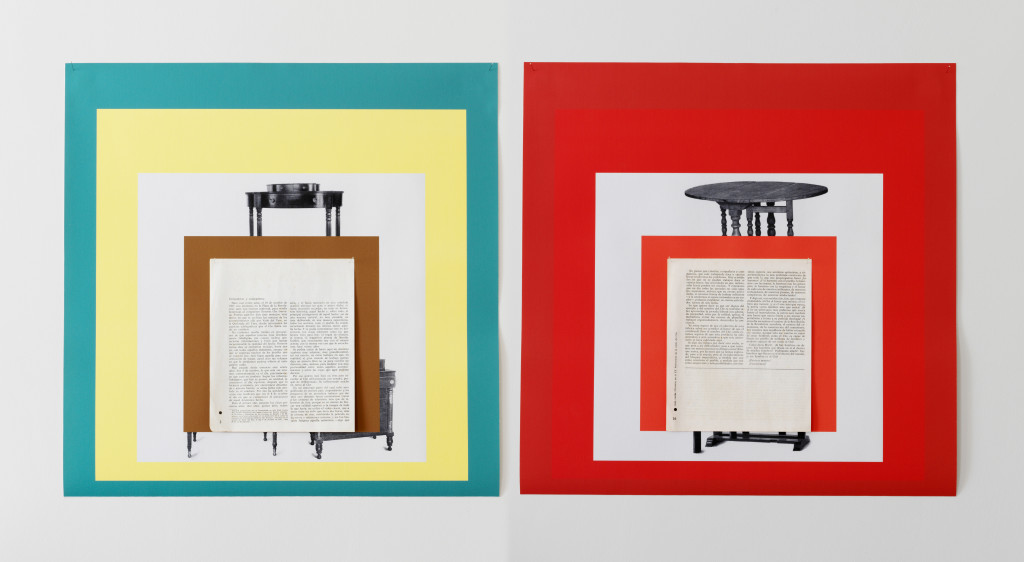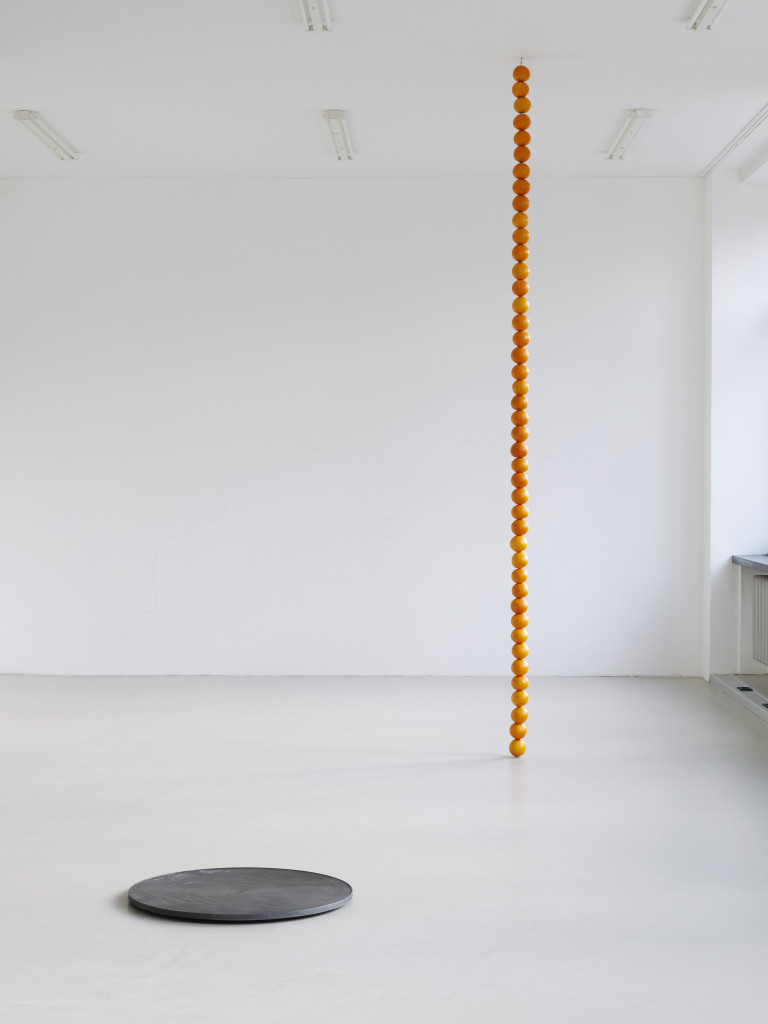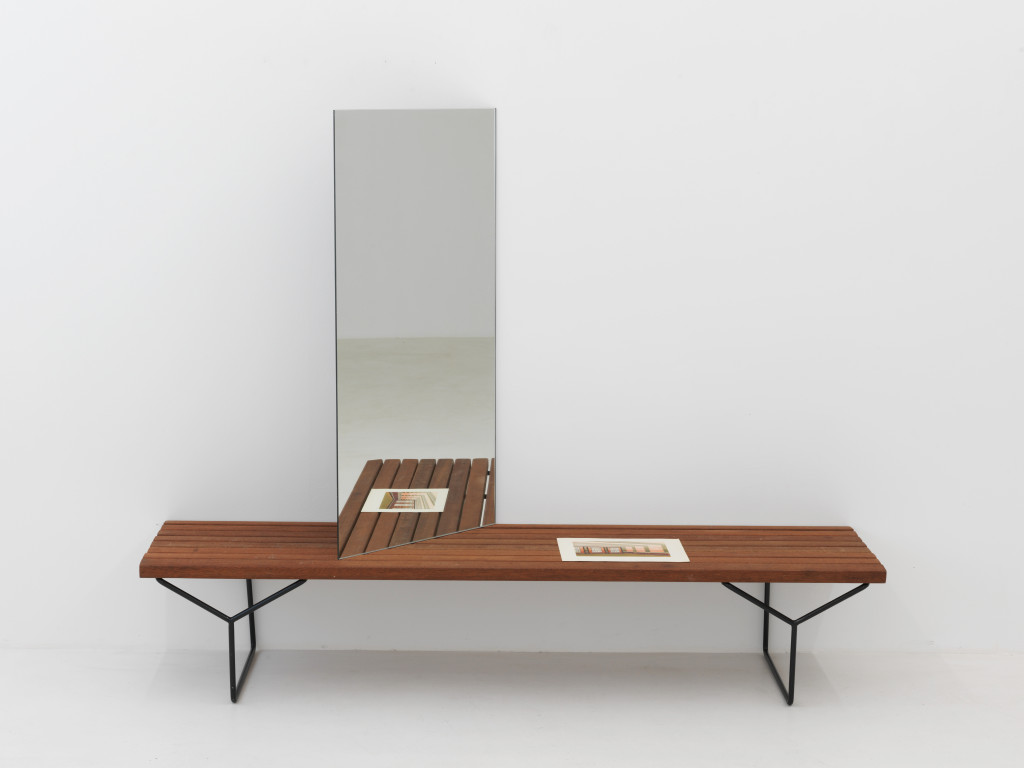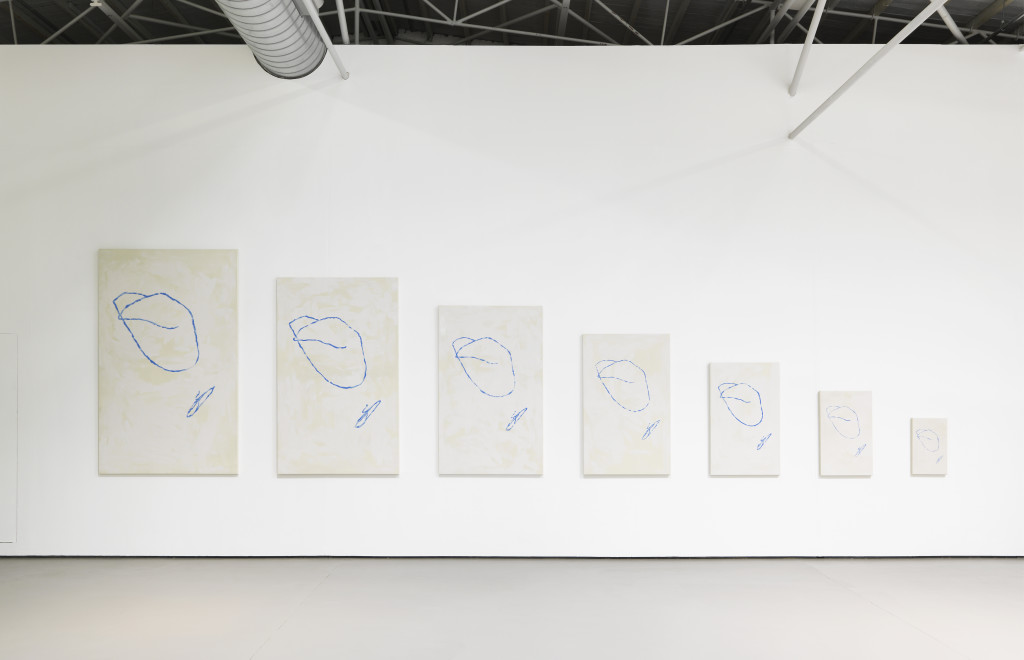Diango Hernández: Time Islands and Space Islands
by Alfredo Cramerotti

Diango Hernández’s artistic practice and sculptural constructions are directly related to his biography, upbringing, and socialization. Born in 1970 in Sancti Spíritus, Cuba, Hernández lived in the Caribbean island nation until 2003. He maintains his Cuban citizenship and still regularly visits the country. From 1988 until 1993 he studied industrial design in Havana. For Cuba, the dissolution of communism in Eastern Europe meant an end to economic subsidies and trading partners, resulting in severe shortages of material and consumer goods. These events had a profound effect on Hernández’s practice. Through experimentation and juxtaposition, he repurposes and transforms discarded, obsolescent debris into new objects and spatial installations. Since this time, found objects have formed a basis for his works, which are in turn are frequently marked by the imaginary world of socialist ideology; the objects’ original purposes are lost as far as possible whilst the half-life of their ideological re-packaging remains intact.
Over breakfast on a cloudy day of Spring earlier this year, Alfredo Cramerotti and Diango Hernández exchanged some thoughts on the artist’s approach and methodology. The conversation carried over lunchtime. In the end, they both went to see some art, as if they were incapable of letting each other go. Here are five distilled questions that were touched upon in that conversation.

Alfredo Cramerotti: Let’s start with the main ideas behind your work—I realize this is a big question, and of course I have my own reading of your work, but it may not be the same with what you think are the main guiding principles of what you do. I am interested in knowing how you yourself “read” your work. Can you step outside Diango for a moment and let me know what you see?
Diango Hernández: I know how hard is to be ourselves, or perhaps it is better to say to perform ourselves. Probably the hardest thing, at least for me, but I can happily “jump” out of myself and see my own “game” from there, a different place. I still remember the first time I had a kaleidoscope in my hands; I was genuinely in love with the object. I used to look through it everywhere; people would think I was looking through a sort of spyglass, or that I was looking at something that was far away. How come something so simple can transform my ordinary view into something so complex and extraordinary? In the fragmentary lens of the kaleidoscope resides an aspect that nowadays I still consider very important. I do not see my work organized by “series,” “themes,” or “periods,” but rather as an articulation of fragments—incomplete and shattered pieces that I carefully arrange and place. I hope one day all these disconnected pieces will come together in a more clear way.
I love to read my art, or any art, under the influence of emotions, I trust them and often think they are both physical and material, and in that sense real. They are sometimes even more real than us.
I am here where you asked me to be, I have in front of me one of Diango’s works, I am now just a visitor, a random viewer and what I see has the power of reminding me of something, maybe a place. I cannot precisely tell you what or where it is, but what I can tell you is that I would love to be there and not here.
AC: Did you get any particular source of inspiration for the visual styles of your recent series of works (the waves; the fruits; the sunsets), or did they materialize in relation to the nature of the materials you used?
DH: I grew up very close to waves, fruits and sunsets, that is what you do when you are born in a Caribbean island. For obvious reasons, the island of Cuba is a particular case—at least the island of Cuba of my generation. As you know, I am from a generation that was educated in the belief of the future; this concept was our only religion, at least the official one. The good thing about “worshipping” the future is that you could become a pure optimist or—what I discovered later—a dreamer. The bad thing comes when the future stops, I mean literally stops, and then does not come back again, at least for your generation or to your island. When someone has kidnapped the future of generations, and of an entire country, what do you do? I decided to go back to my waves, fruits and sunsets. They give me those timeless emotions, the same invariable emotions that landscapes offered to the romantics, a view in which you can accommodate atemporal emotions. All meaning behind these bodies of works can only be fully understood by my friends, who are today living all over the world. These works are literally encryptions, and it is through the reading of their hidden and scrambled messages that these pieces can be fully understood.

AC: Can you dive a bit into the technical aspects of the works? The gathering of raw material, software or hardware (in the wide sense) used, as well as the selection and editing process or particular challenges you and your team faced in realizing the works?
DH: As you know, I am permanently collecting things of all sorts—books, objects, paper—generally speaking, I collect whatever could trigger a special thought on me. The process of building hierarchies and at the end deciding what to do with all this material for a specific occasion is usually complex and kind of difficult. Over the years, I realized that artistic ideas are a very fragile thing, they appear and if you are not fully prepare they just vanish. The way that an idea becomes stronger is really beautiful for me, and that is usually the process that I enjoy the most. Crafting ideas is, first of all, an internal fight that can be visualized only by writing; repeatedly writing a word or a short sentence usually helps. Once all ideas are clear, then I fully commit to them. I learned that the process of thinking must be as completed as the process of making, and if not, then I am sure I will not be happy, and as a result last minute changes could happen and could easily destroy months of work. For every exhibition, I develop different set of techniques, and consequently, different advisors and producers help me or guide me through the production process. For instance—the making of the wave paintings is the result of a long process that involved digital, mechanical, and handcraft skills. The biggest challenge for me, and for the valuable team that accompanied me, while I was producing this work was the blurring of every single production—non desired—that traced in this way that something complete could be achieved.
A kind of total object in which idea and material become a unity.

AC: I saw a recent installation of the Waves piece in the Unlimited section of Art Basel, where it was given a prominent position at the entrance of the Hall 1. It was basically made of two rows of huge billboard sized structures, at the supporting frame and height of actual roadside billboards, so that visitors would walk underneath them—or beside them, or between them—but could not really face them frontally. You chose not to have an “in your face” type of installation. What was the underlying approach to this?
DH: A billboard is an outdoor object that is usually installed in distant, unreachable zones; therefore we rarely see it close enough to realize how big it actually is. Bringing an outdoor-public object to an indoor-private space is indeed very important for this particular work. You probably remember works of mine in which I included electric poles, highway lamps, and TV antennas. Bringing these objects into indoor spaces—private spaces—allows me to show how the content and connotations that these objects carry can have a massive impact in your private life. I am looking forward to seeing this installation in a smaller and more intimate space, then we can better see how difficult is to have the “sea” inside your house.
AC: Tell me a secret about your work. Even a small one.
DH: Secrets? I read this sentence everyday:
Ah, que tú escapes en el instante
en el que ya habías alcanzado tu definición mejor.
Ah, that you escape in the flash
when you had come upon your best definition.1
Cuban-born and Düsseldorf-based artist, Diango Hernández, is one of the foremost conceptual artists from Central and South America working today. Hernandez’s work has been exhibited in shows at major international art centers and biennials, e.g. MOMA, New York; Haus der Kunst, Munich; the Hayward Gallery, London; the 2005 Venice Biennale; the 2006 São Paulo and Sydney Biennales and the 2010 Liverpool Biennial. Major solo exhibitions were held at Kunsthalle Münster and at MART Rovereto, and in November 2015 a new one will open at MOSTYN, Wales.